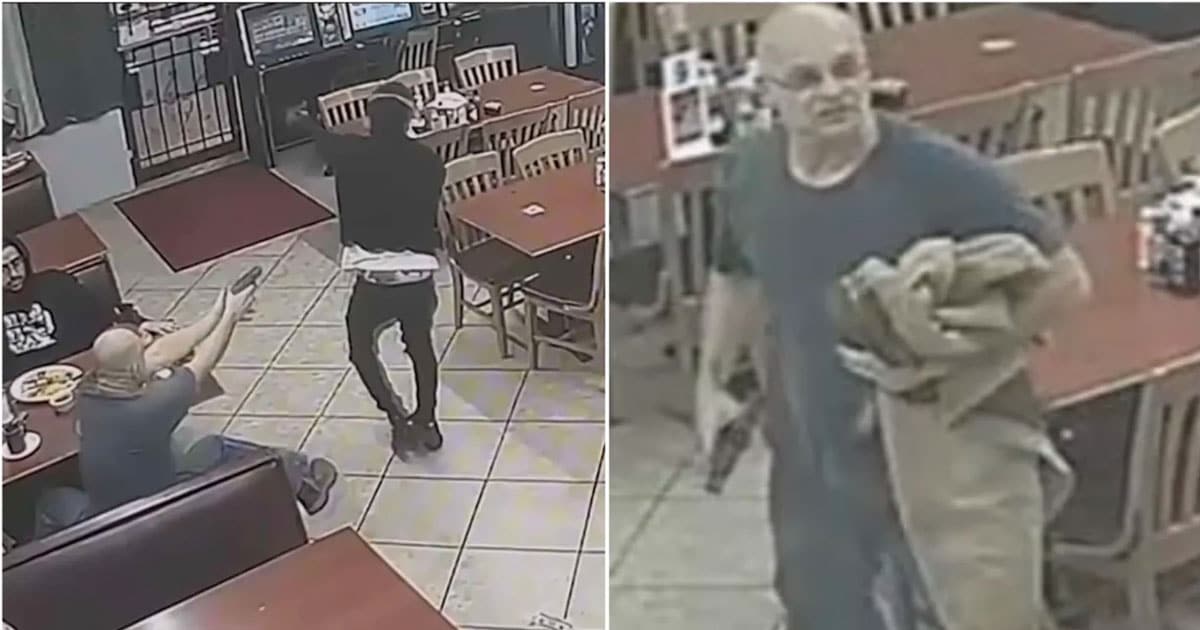
The footage of the violent incident went viral and sparked significant controversy over the appropriate use of force. Some activists called the citizen’s response “overkill” and raged that the shooter had taken “excessive” measures.
But the grand jury “no-billed” the shooter, meaning no charges will be filed. A press release from the Harris County District Attorney’s Office explained the process.
“Harris County grand juries are composed of 12 randomly selected residents who meet regularly for a period of three months to review all criminal charges to decide whether there is enough evidence for a case to proceed.”
It takes nine or more of the grand jurors agreeing that enough probable cause exists to issue a “true bill.” This is an indictment that means the case will then proceed. However, if nine or more of the panelists believe probable cause was not presented, they may decide to issue a “no bill.”
This clears the accused of criminal wrongdoing.
Diners were enjoying their food at the El Ranchito taqueria last January when 30-year-old Eric Eugene Washington entered the restaurant and brandished what appeared to be a firearm. According to investigators, the suspect began robbing the establishment’s customers as he walked up and down between the tables.
The armed customer was eating alone as the robbery unfolded. He fired at least nine rounds at Washington from behind, and the suspect fell to the ground near the entrance of the restaurant and died.
The shooter left, and police asked for the public’s assistance in locating the man seen on video stopping the robbery. Controversy immediately exploded.
Washington was later found to be carrying a fake plastic pistol. Some community members harshly criticized the armed diner’s actions, calling him a vigilante who went overboard to stop the robbery.
Still others countered that the customer’s actions were justifiable self-defense and he had considerable reason to believe his life was in danger from the armed robbery in progress.
Interviewed by Fox News Digital in the aftermath of the incident, Houston criminal defense attorney Sean Buckley explained the legal situation faced by the shooter. “As long as the individual, this armed Samaritan, believes that the firearm was real or could have been real, [that is] what is important, not the actual nature of it.”
In other words, the gun does not have to be real. There just has to be a reason to believe that it is real to justify defensive actions in the eyes of the law.
Washington’s mother, Corine Goodman, had a much different take on the situation.
“If you had to kill him, I can deal with that. I can come to grips with that. He did something wrong; I understand that. But for him to be shot four times in the back leaving and when he falls down and he shoots him four more times. He abused him.”
While no one celebrated the death of the suspect, it must be said that a person clearly takes their life into their hands when they rob a crowded establishment.
Fake pistol or not, the intent of the suspect is to intimidate the customers into compliance by making them believe that the gun he is holding is the real thing. In this case, it worked too well.
The shooter watched a man walk through the restaurant and threaten diners if they did not give up their valuables. The grand jury correctly saw these actions as an imminent threat.
As for “overkill,” the armed customer acted in a split second in a time of extreme duress. He understandably only stopped when he knew beyond the shadow of a doubt that the threat was over.
